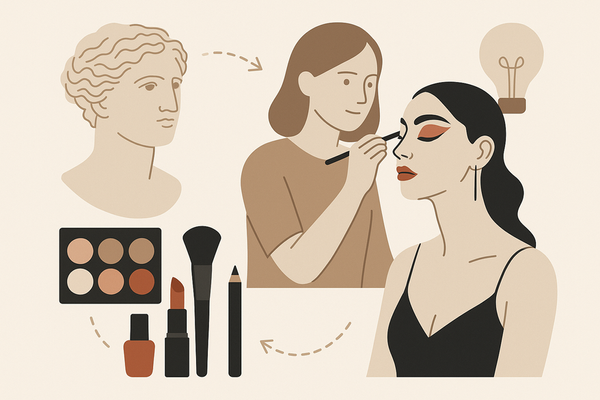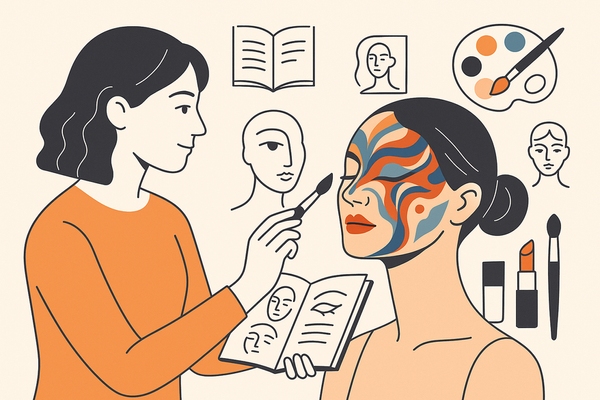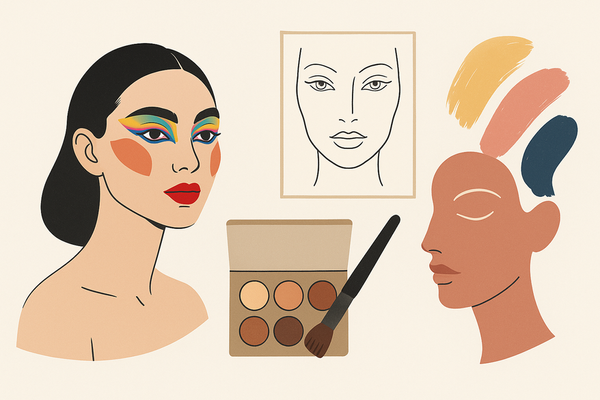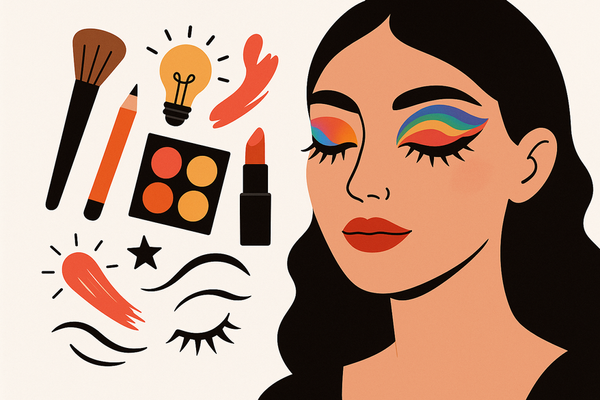The Ultimate Guide to Creative Makeup Designs
Explore creative makeup designs: history, trends, tools, and techniques to transform your look into an art form. Perfect for makeup artists and enthusiasts.
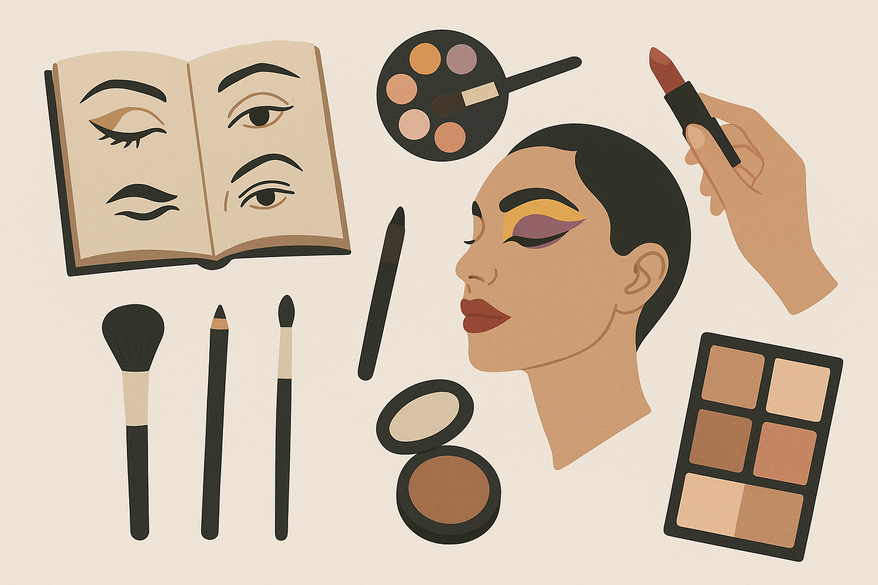
Estimated reading time: 8 minutes
Key Takeaways
- Creative makeup designs transform faces into storytelling art.
- Historical evolution spans ancient rituals to modern face art trends.
- Social media & AI drive rapid trend diffusion and digital experimentation.
- Essential tools & techniques make bold, innovative looks achievable.
- Step-by-step guide simplifies your first creative makeup project.
- Top resources like AI Makeup Coach and Virtual Makeup Try-On boost your creativity.
Table of Contents
- Brief History of Creative Makeup Designs
- Makeup in Art, Fashion & Individual Style
- Popular Styles & Aesthetics of Creative Makeup Designs
- Social Media & Global Culture Influence on Creative Makeup Designs
- Essential Tools for Creative Makeup Designs
- Core Techniques Explained for Creative Makeup Designs
- Step-by-Step Guide to a Basic Creative Makeup Design
- Makeup Check AI for Rapid Experimentation
- Conclusion
- FAQ
Brief History of Creative Makeup Designs
Makeup artistry has deep roots that reach far back in time. Over centuries it evolved into the imaginative face art we celebrate today.
- Ancient Origins
Kohl lines around the eyes in ancient Egypt served both practical (sun and insect protection) and ritual purposes. - Middle Ages to Renaissance
Pale faces with rouged cheeks signaled status in Europe; painters’ contouring and shading inspired early face sculpting techniques. - 20th Century Evolution
Hollywood icons like Marilyn Monroe and Elizabeth Taylor popularized signature looks, while mass-production of cosmetics encouraged experimentation.
Creative makeup designs evolved through these stages into modern face art—see the creative makeup designs guide for more.
Makeup in Art, Fashion & Individual Style
Editorial shoots, theater performances, and personal expression all shaped today’s bold looks.
- Editorial & Theater
Photo shoots and films use makeup to tell narratives; runway shows incorporate dramatic colors and shapes to match themes. - Contemporary Culture
Individuality rules—artists break molds with avant-garde, fantasy, and graphic styles to comment on identity and beauty. - Self-Expression
Creative makeup designs let each person showcase a unique vision of beauty through color, texture, and form.
Explore further: Exploring the Art of Creative and Editorial Makeup and Intersection of Art and Makeup: Exploring Cosmetic Creativity.
Popular Styles & Aesthetics of Creative Makeup Designs
This section covers the hottest aesthetics in creative makeup designs.
- Avant-garde
Abstract shapes, bold blocks of neon color, and unconventional textures like cracked paint or feathered edges. - Fantasy
Mythical vibes—fairy, mermaid, or dragon—with pastel gradients and iridescent powders that shift in light. - Graphic Eyeliner
Zigzag lines, floating hearts or stars, and precision tips for crisp, modern accents. - Embellishments
Gems, pearls, metallic foils, micro-beads and safe adhesives—perfect for 3D details. - Seasonal & Viral Motifs
Painted floral crowns, galaxy speckles, or Halloween skeleton cheekbones—trends that spark inspiration.
Social Media & Global Culture Influence on Creative Makeup Designs
- Platforms
Instagram, TikTok, and YouTube share free tutorials and reels instantly. - Influencers & Trend Diffusion
Top artists post techniques that spread across continents in hours.
For more global inspiration, see Exploring the Art of Creative and Editorial Makeup and Intersection of Art and Makeup: Exploring Cosmetic Creativity.
Essential Tools for Creative Makeup Designs
- Brushes
Flat shader for pigment packing, fluffy blending for seamless fades, liner brush for precise details. - Sponges & Airbrush Systems
Makeup sponges for smooth base, mini airbrush kits for flawless gradients. - Unconventional Applicators
Silicone pads for dot effects, DIY foam stamps for repeated shapes. - Products
High-pigment shadows, liquid/gel liners, loose and adhesive glitters, rhinestones with cosmetic adhesive.
For AR-powered digital try-on, see Virtual Makeup Try-On: Revolutionizing Beauty with AR and AI.
Special pro tip: Always test adhesives on skin first when crafting creative makeup designs.
Core Techniques Explained for Creative Makeup Designs
- Blending
Layer colors gently with a fluffy brush and soft pressure to achieve smooth gradients. - Color Blocking
Use tape or stencils, apply bold patches, then peel slowly for crisp edges. - Glitter Effects
Apply glitter primer, then press loose or adhesive glitter with a silicone tool for safe, high-shine sparkle.
Step-by-Step Guide to a Basic Creative Makeup Design
- Prep
- Cleanse and moisturize skin.
- Apply a silicone-infused primer (e.g., Smashbox Photo Finish).
- Sketch
- Use a light pencil liner to map shapes around eyes or cheeks.
- Build Color
- Layer cream products first.
- Set with matching powder eyeshadow to intensify hue.
- Dimension
- Add glossy or metallic highlights on top of matte areas.
- Embellish
- Place gems or decals with lash glue or medical adhesive.
- Seal
- Finish with a long-hold setting spray (e.g., Urban Decay All Nighter).
Makeup Check AI for Rapid Experimentation
For instant makeup generation and look analysis, try Makeup Check AI to generate variations, scan products, and track your progress—all powered by AI.
Conclusion
From ancient kohl lines to viral TikTok galaxy faces, creative makeup designs have evolved into an art form that empowers individuality. We’ve covered history, key trends, essential tools, core techniques, pro tips, DIY guides, and top resources. Embrace creativity in makeup as a powerful form of self-expression, share your designs on social media, and continue pushing the boundaries of face art today!
FAQ
Q: What basic tools do I need to start creative makeup designs?
A: Begin with essential brushes (shader, blending, liner), high-pigment eyeshadows, and a quality primer. As you progress, explore sponges, airbrush systems, and embellishments like gems and glitters.
Q: How can I practice advanced techniques safely?
A: Always test new products on a small patch of skin, use hypoallergenic adhesives, and clean tools thoroughly. Gradually experiment with small looks before full-face designs.
Q: Where can I find inspiration for unique looks?
A: Follow makeup artists on Instagram, TikTok, and YouTube. Explore editorial shoots, fashion shows, and art exhibitions. Online galleries and platforms like Pinterest are also goldmines for ideas.
Q: Can AI tools really help me improve my designs?
A: Yes—AI platforms like Makeup Check AI can generate fresh variations, analyze your color choices, and recommend products, speeding up your creative workflow.

